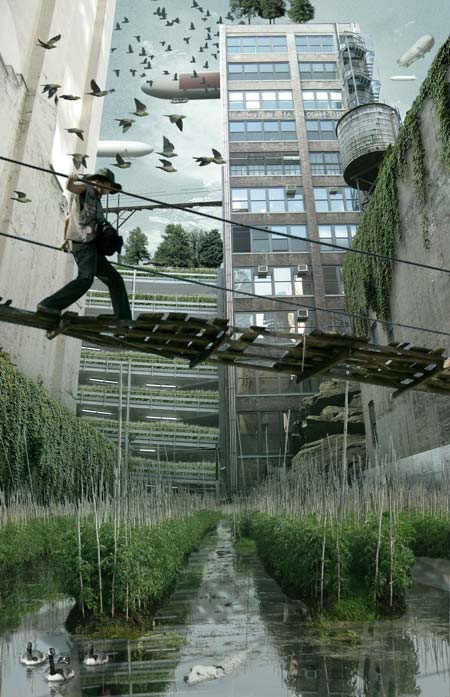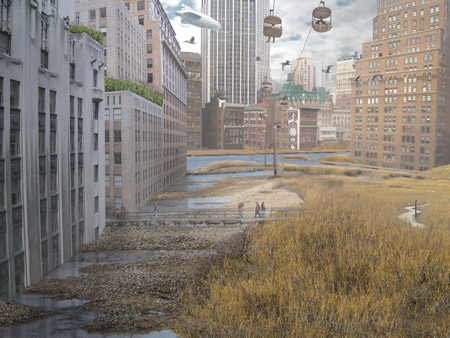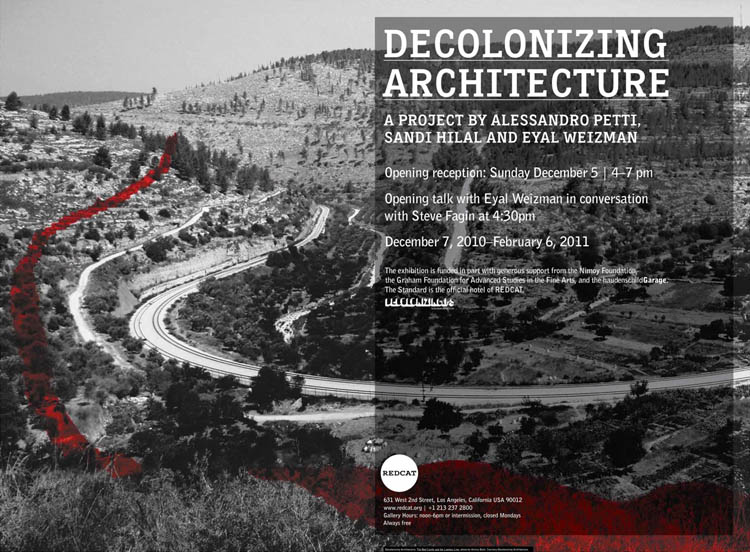
© Magnus Larsson, Dune Arenaceous [taken from Magnus Larsson web page]
Magnus Larsson envisions to build a green wall across Africa, a Dune Arenaceous that irrigate the soil and prevent the environment from desertification to sustain an underground city.
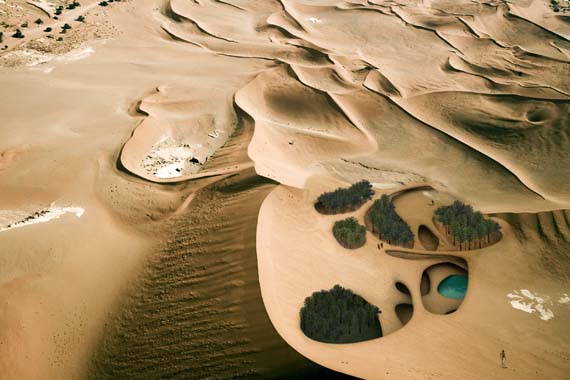
Dune Arenaceous © Magnus Larsson [taken from Magnus Larsson web page]
Larsson uses the biological properties of a marshlands bacteria - the Bacillus Pasteurii - which he flushes onto the dunes to solidify sand into sandstone and build a city of sandstone structures underneath the Sahara, using the desert soil.

© Magnus Larsson
By building without machines or architects, he would leave the bacteria sculpt the landscape of the city. The biochemistry of sand solidification recalls the sedimentation of rocks like limestone, creating interesting cavernous shapes after years of aggregation.
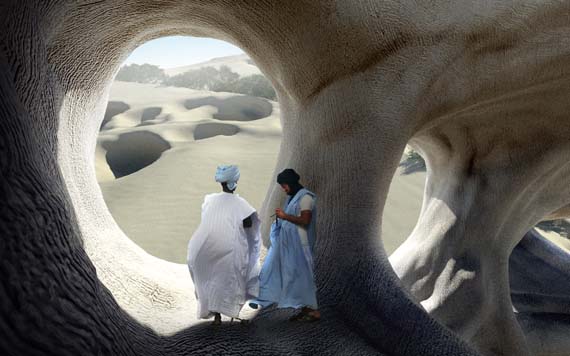
© Magnus Larsson
Biological scientists will wonder about the long term effects of importing a non-native organism into a vast environment like the Sahara; the bacteria which could potentially solidify the whole desert - recalling the invasive nature of plants like Kudzu in America and Asia - can also save Africa from aridity.

Sietch Nevada © Matsys Design [taken from Matsys design we page]
Larsson's dune habitat echoes Sietch Nevada, an experiment of Matsys Design which re-thinks the way ancients civilizations - like the Nabataeans in Petra - used to control water and create artificial oasis in the desert.
The Sietch Nevada project brings to reality Frank Herbert's Dune novel. Here, underground communities master the art of guiding and storing water via a network of underground canals to answer water shortage in Southwest America and avoid water wars.






